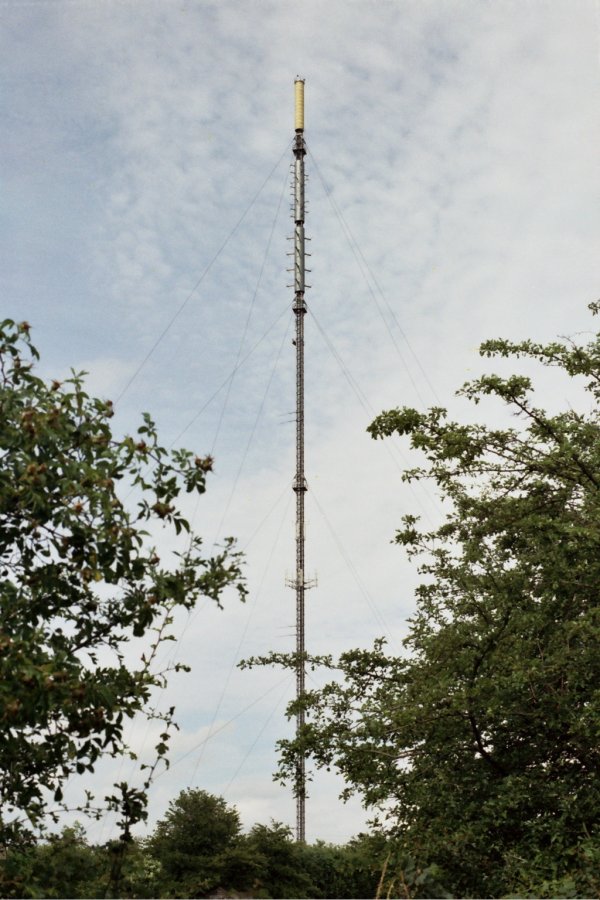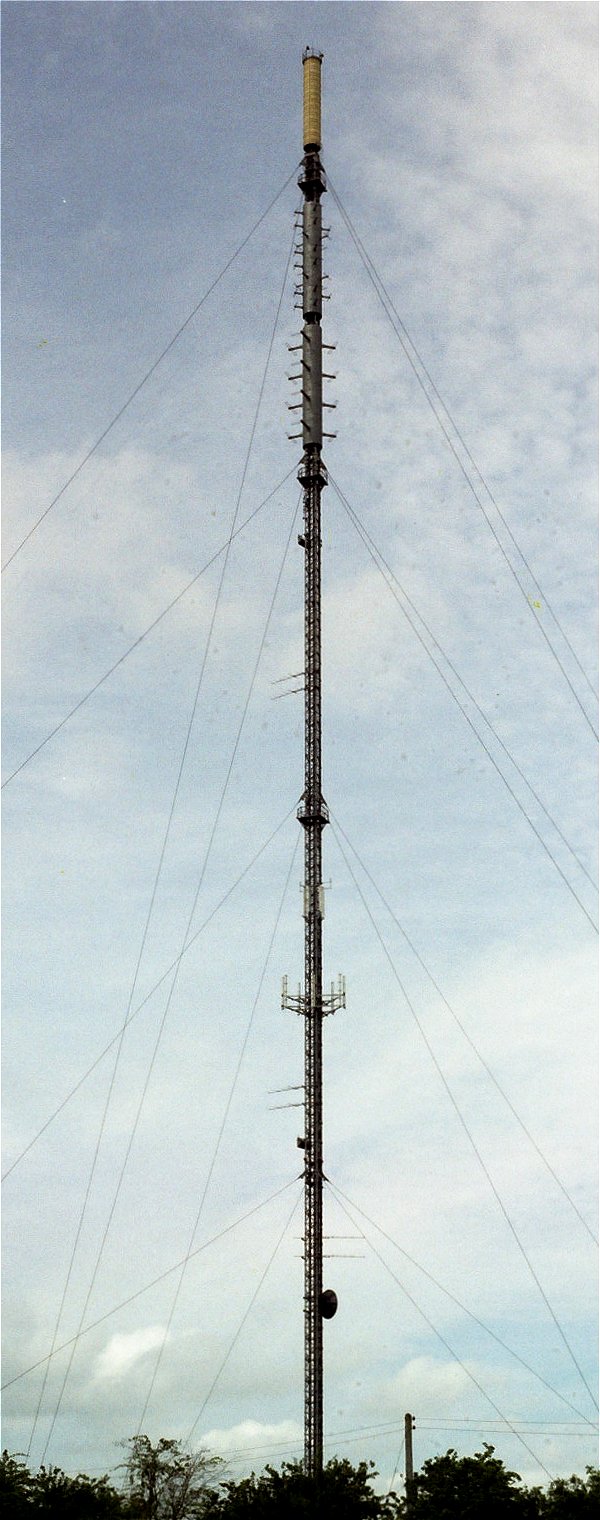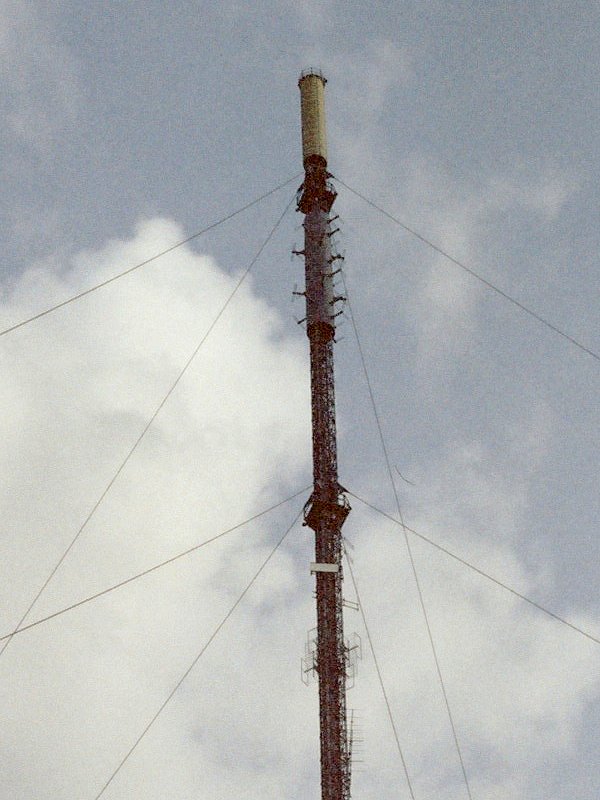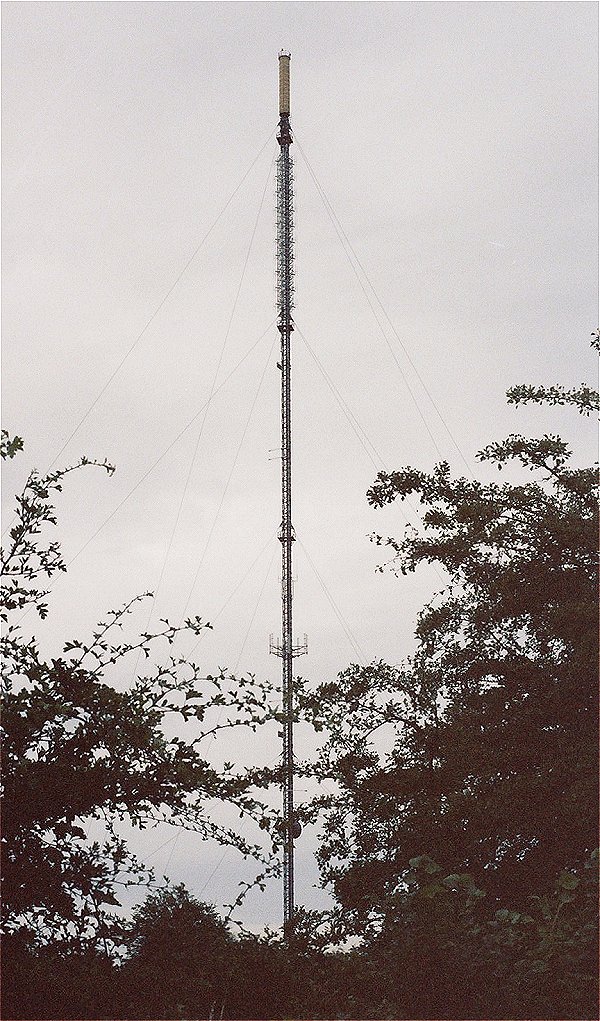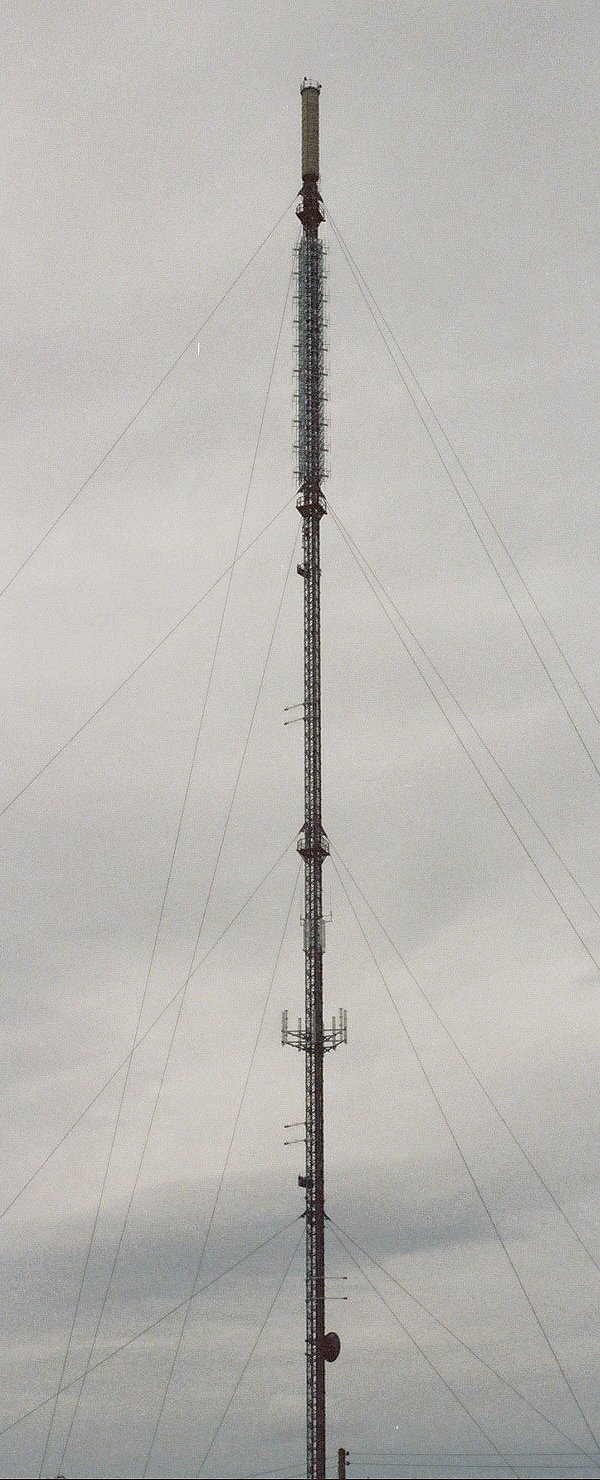The BBC transmitter site at Beckley just NE of Oxford was built in the early 1960s. Whilst there was a need for a low power filler station for BBC TV on 405 lines, the greater priority was to improve FM reception in the much bigger hole in coverage that existed in the hinterland between Wrotham and Sutton Coldfield. For TV coverage the site at Crystal Palace is 17 miles further north west than the equivalent FM radio site at Wrotham, and this extra distance becomes a real problem in Oxfordshire as far as FM reception is concerned.
Originally - judging by the planning archives - a 500 ft mast with Band I at the top and (unusually) a six tier slot antenna for FM was proposed, but by that time slots seemed to be falling out of favour with the BBC, partly perhaps because (like at Peterborough) a certain control over the HRP for Band II was required.
As a result the set up (minus of course the UHF cylinder initially) shown in the first few photos below was built, with (again unusually for the BBC) the Band I ch 2 650 W aperture BELOW the Band II 22 kW array. BBC TV went into service on 29th January 1962 and BBC FM radio from 28th May 1962.
Oxford was also unusual in that two versions of the Home service were transmitted, on 93.9 and on 95.85 MHz. The former carried the Midland region (RBL'd - like Light & Third - from Sutton Coldfield) whilst the latter carried Home South & West. This feed was provided by picking up the Wenvoe signal on 92.125 MHz at Swindon and routing it on by line to Oxford. Early in 1970 the South & West version of, what was by then Radio 4, was closed, prior to the launch of Radio Oxford on the 29th October 1970, on 95.0 MHz.
BBC 2 entered service from Oxford on 17th February 1968, with BBC 1 on 16th May 1970 and ITV on 15th June 1970. The aerial for this is described in detail in a BBC R&D paper linked from the bottom of this page.
This site was on time for the launch of both Channel 4 & Channel 5, although in the case of the latter the power is only 8% of the other services from an aerial 54m lower.
The Oxford area is well known for multiple coverage overlap with fringe reception possible from Crystal Palace, Sandy Heath, Hannington and Sutton Coldfield. |

